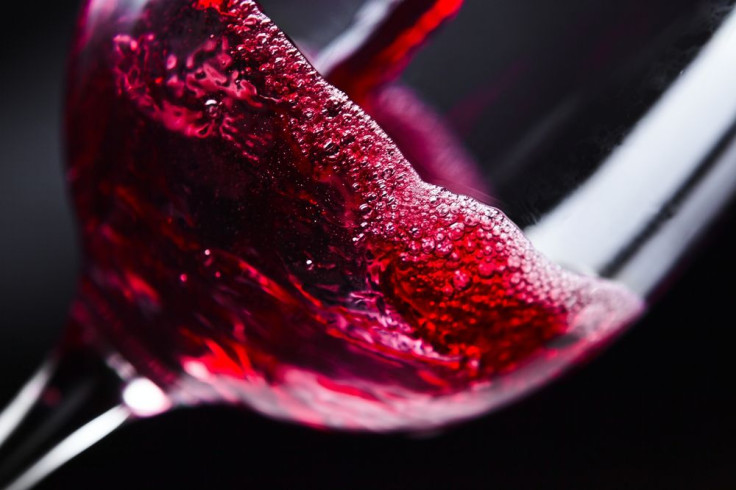Hangover-Free Red Wine? I Got Drunk On Veglio Michelino & Figlio’s Low-Histamine Wine And This Is How I Felt The Next Day

In my line of work there are a few perks, and testing out a wine that reduces the dreaded “red-wine headache” is surely one of them. Although I would not go as far to say that Veglio Michelino & Figlio’s low-histamine wine is absolutely hangover-resistant, it did certainly make for a better drinking experience.
What Are Histamines And Why Does It Matter If They Are In Our Wine?
Histamines are chemicals released by our immune system in the presence of invading bodies. The release of histamine causes our capillaries to be more permeable, allowing white blood cells to move about more easily in order to target and attack foreign bodies. Unfortunately, this reaction also causes unpleasant symptoms, such as inflammation, runny nose, and watery eyes. In the case of allergies, our immune system releases histamine in the presence of otherwise non-threatening bodies, such as pet hair or tree pollen.
As well as being produced by our bodies, histamines are naturally found in some foods, including the skin of grapes. The infamous “wine headache” is believed to be caused by histamine ingestion in those who have histamine sensitivities — or an inability to properly metabolize the enzyme. Histamines are also known to worsen asthma, eczema, and cause hives, itching, stomach pain, diarrhea, rashes, The Daily Mail reported. According to the Wall Street Journal, red wines have more histamines than white wine and champagne, making red wine something that those with histamine sensitivities have learned to shy away from.
However, histamine is not the only component in wine that can contribute to your discomfort. Tyramines, a compound found in red wine, and the sulfites produced during fermentation can also cause allergic reactions, although in a much smaller percentage of drinkers.

My Experience
Veglio Michelino & Figlio, a small, family-owned and operated winery located in the Piedmont region of northwestern Italy, produces a natural low-histamine red wine, which I had the opportunity to test.
While traditional wines contain around 10mg of histamines per liter, the Dolcetto D'Alba and Barbera D'Alba wines have only 0.5mg per liter per research from International Wine Consultant Sebastiano Ramello. Exactly how the wine achieves such a low amount of histamines depends on every aspect of the wine’s creation, from the grapevine to the bottling process.
“The grapes are certainly a very important aspect of it. So is the soil and what you do the whole 12 months of the year,” Sergio Sgro, Veglio’s National spokesman in the United States, told Medical Daily. “It’s extremely important as well to make sure that everything is clean and sanitized before and after the bottling process.”
As far as I’m aware, I do not have any histamine sensitivities, but I’m quite familiar with the red wine headache and even worse red wine hangover. So I was excited to see if the wine would live up to its reputation.
On a Saturday night, I invited my mother and husband to help me finish two bottles of Veglio’s low-histamine wine. In the name of science, they obliged. Three glasses into the bottle I noticed that I felt surprisingly lucid. Although I was beginning to feel intoxicated, my head felt clear. Three hours later and one bottle done, and I was still going strong — no groggy feeling and definitely no discomfort. By midnight, my husband and mother dropped out of the red wine challenge, but with a bit of dedication and an SNL re-run to keep me company, I persevered.
The next morning, I was fully aware that I had drunk an entire bottle of wine the night before. I was thirsty and groggy, and most definitely did not go for a Sunday morning jog as I had previously planned. Still, I felt significantly better than I usually did the morning after drinking, and despite the dehydration and sluggishness, I did not actually have a headache, and this made the situation so much more bearable. I got up, drank some orange juice, had a bit of toast, and by midday I was fine.
Too much alcohol is bad for you, no matter how you want to look at it, but this wine both tasted and felt significantly cleaner, as if a large percentage of the normal “toxins” in the wine had actually been removed. So, at only around $13.99 to $16.99, buying a “cleaner wine” isn’t going to break the bank.
All-Natural Route
As Sgro explained, it’s easy to create a low-histamine wine in the lab. It’s obtaining the same results naturally that is difficult to do. And he’s right. Advancements with GMOs (genetically modified organism) are transforming the food industry, wine not excluded. A recent breakthrough in “jail-breaking” the genomes of yeast has led to speculation that lab-created “healthier” wines may soon be a thing. These wines would be altered to not only have less hangover-creating toxins removed but also have healthy components such as resveratrol added. However, although GMOs remain a controversial issue, Veglio’s wine has closely achieved the similar results using nothing other than good farming and hygienic bottling.
A completely hangover-free wine, or any type of alcohol, does not yet exist because the actual hangover is caused by many different factors. Dehydration caused by excessive urination, drops in blood sugar, raised production of stomach acid, and disrupted sleep quality can all contribute to the uncomfortable feelings experienced after a night of heavy drinking. Unfortunately, a low-histamine wine can’t eliminate these factors, but that’s not saying it’s completely useless.
Veglio Mechelino & Figlio’s low-histamine wine helps to greatly reduce the amount of histamines, one of the main causes of adverse reactions to wine. Although I can’t say how the wine affects those who experience histamine sensitivities, my firsthand experiences as a non-sensitive drinker is that, less histamines do make for a more enjoyable drinking experience.



























